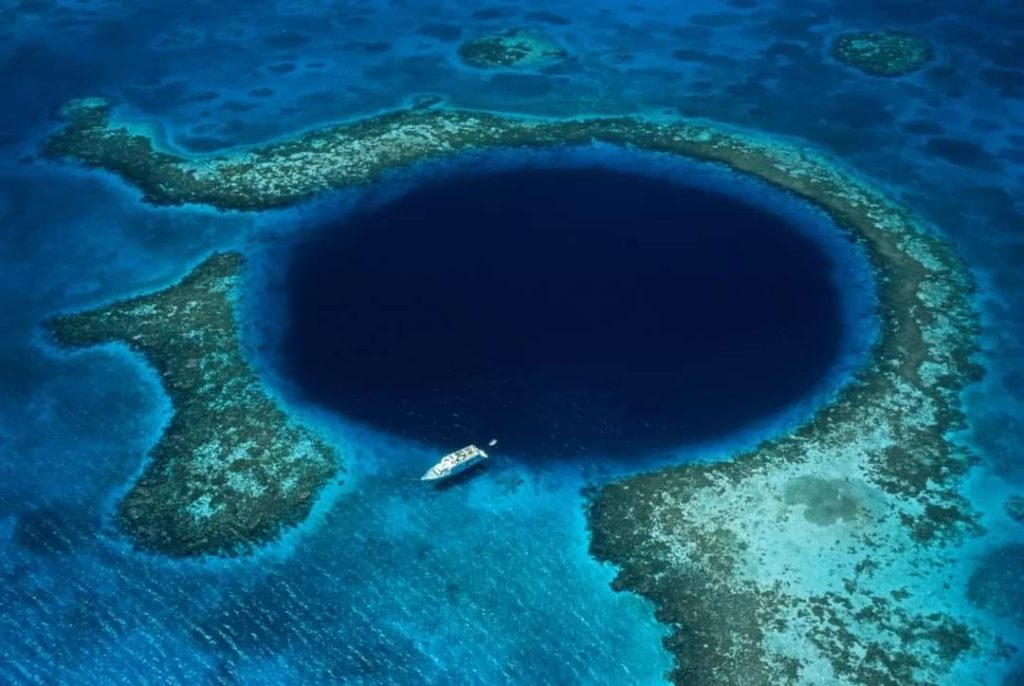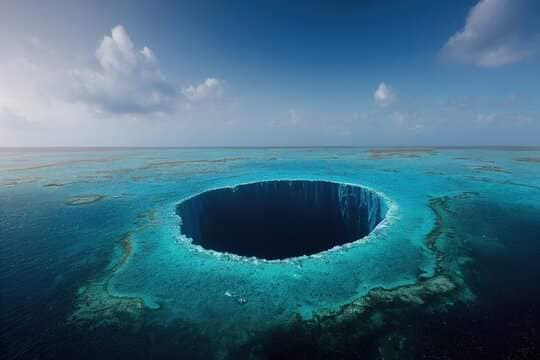Belize’s Great Blue Hole is one of the country’s most famous attractions and is, without a doubt, one of the top diving sites in the world. Surrounded by the Lighthouse Reef atoll, the Great Blue Hole is a natural sinkhole that measures roughly 1,000 feet across and 400 feet deep. Seen from space, the center of the hole is a deep navy blue that stands out in a sea of aquamarine waters and white-sand beaches.
The Great Blue Hole is believed to be the world’s largest feature of its kind and is part of the Belize Barrier Reef Reserve System, a UNESCO World Heritage Site. The sinkhole formed during the last glacial period, sometime between 25,000 to 100,000 years ago (though some experts say it could be as old as 150,000 years), and it was later flooded by rising ocean levels. It is one of the most popular dive sites in the world, made famous by Jacques Cousteau who visited in the 1970s and named it one of the best diving spots on the planet.

Visiting the Great Blue Hole is certainly the adventure of a lifetime, but it does take some leg work and, in some cases, advanced preparation to get there.
The Great Blue Hole is one of the most famous dive sites in the world, drawing people from all over who want to explore its mysterious depths. There are millennia worth of stalactites, stalagmites, and, yes, even a few sharks. The entire area surrounding the Great Blue Hole is prime real estate for spotting a kaleidoscope of tropical fish, shrimp, and other Caribbean wildlife, so it’s a paradise for people who love to explore the world below the surface of the water.

That said, only those who are fully qualified can dive here — it is not a dive for beginners. To be qualified, divers need at least an Open Water or Advanced Open Water diving certification. Before diving the Blue Hole, divers will typically practice their skills with a divemaster who will make the final call on whose skills are up to the challenges of the Blue Hole.
